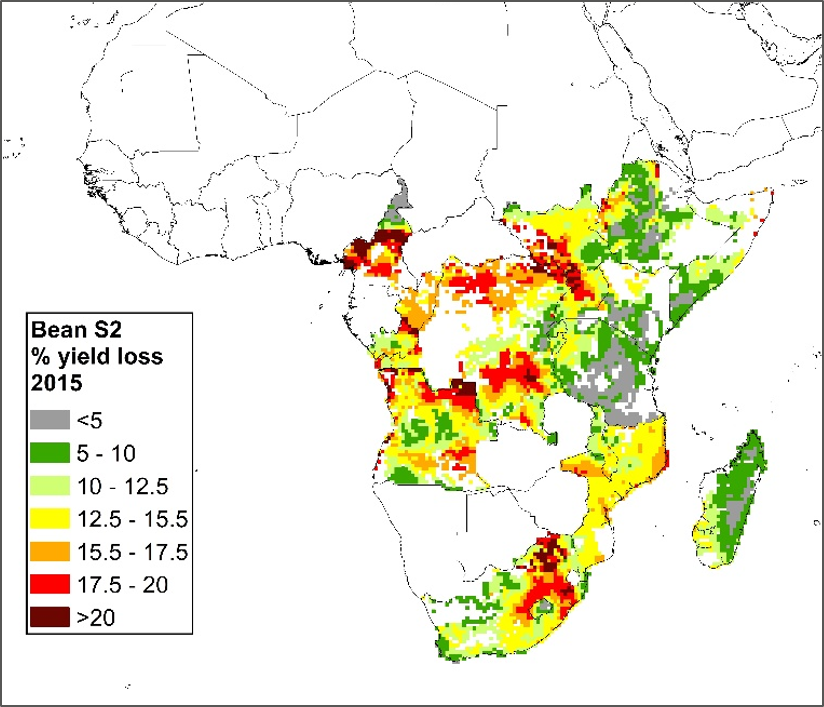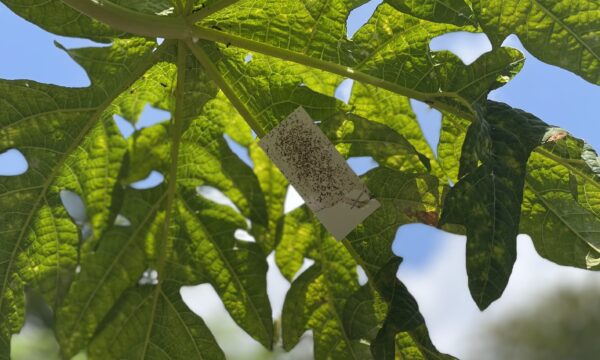Ground-level ozone is one of the most widespread pollutants in the world. Although ozone in the upper atmosphere provides essential protection from the sun’s harmful rays, at ground-level it has a number of harmful effects. Ground-level ozone pollution contributes to climate change, impairs human health and damages vegetation.

Additional levels are produced when pollutants from human activities, such as industry and biomass burning, react together in the presence of sunlight. Concentration levels can be particularly high in agricultural areas downwind of large cities.
It is predicted that ozone pollution will continue to increase, with levels highest in areas with rapidly growing populations. This is particularly bad news for crop growers in developing regions, as high concentrations of ground-level ozone can have a negative effect on crop yields.
Crop damage

Crop damage depends on the crop species as well as agricultural activity, soil moisture and ozone concentration. It can cause a range of effects including visible leaf injury, growth and yield reductions, and altered sensitivity to biotic and abiotic stresses. In Europe, the estimated loss of wheat grain yield from ozone was €3.2 billion in 2020 (Source: The Global Challenge Network on Tropospheric Ozone, 2021, Agricultural and crop-effects of ozone: http://www.ozone-net.org.uk/sites/ozone-net.org.uk/files/documents/filedepot/4/GNC_OzoneFactSheets_AgriCropEffects.pdf). It is now seen as a major threat to agricultural yields and therefore food security.

Upcoming ozone pollution webinar
CABI’s Léna Durocher-Granger will be hosting a 90-minute interactive webinar on the threat ozone pollution poses to agriculture in tropical regions. Alongside Léna, Dr. Felicity Hayes and Dr. Mike Perring (from UKCEH; UK Centre for Ecology & Hydrology) will discuss ozone’s impact in the developing countries of Asia, Africa and Latin America, where the economic and social consequences of loss of production can have serious implications.
Aimed at policy makers, university lecturers and students in agriculture and food security, crop scientists, crop breeders and plant protection officers, the webinar will consider what strategic actions can be taken to manage the threat in the light of multiple environmental challenges.
Webinar registration
To provide region-specific information (e.g. on trends, crop varieties) and for the convenience of participants, two webinars are available. Registration is required.
Tropical agriculture in Asia and Africa
Register here
https://register.gotowebinar.com/register/6613325363680162575
(Wednesday 29th September 2021, 10am BST UK; 11am Zambia; 12pm Kenya; 2.30pm Mumbai; 5pm Beijing; 6pm Tokyo)
Tropical agriculture in Africa and South America
Register here
https://register.gotowebinar.com/register/5504920885993411083
(Wednesday 29th September 2021, 3pm BST UK; 4pm Zambia; 5pm Kenya; 11am Sao Paulo / Buenos Aires; 10am Manaus; 9am Quito / Lima; 8am Guatemala)
Questions and information
Please contact Léna Durocher-Granger (L.Durocher-Granger@cabi.org) and/or Mike Perring (mikper@ceh.ac.uk) if you have any questions or need further information on the webinar / UKCEH – CABI initiative.
Further reading
Related News & Blogs
The role of soil health in sustainable agriculture
Previously, we have discussed the importance of soil health for agriculture, highlighting its threats and outlining protection strategies. In this blog, we dig deeper into the role of soil health in sustainable agriculture and explore its long-term ben…
18 June 2025




